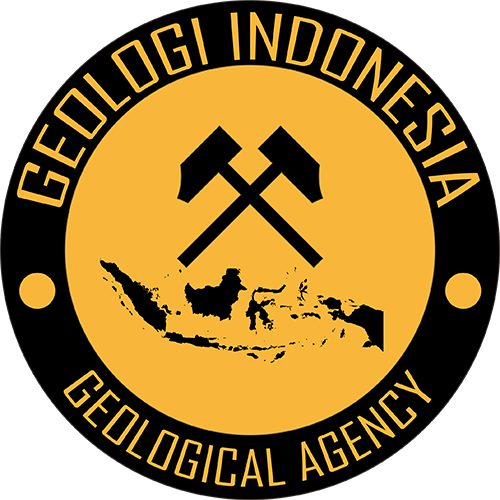Prospectivity & Resources
of
Bone Basin
Basin Capacity
Data based on
07 Dec 2025
Resources
Data based on
07 Dec 2025
Conventional 239.79
Conventional 1.16
Unconventional N/A
Unconventional N/A
Executive Summary
of
Bone Basin
Description
The history of exploration in this basin started from 1909 and 1915 (Abendanon, 1915) conducted a geological survey and found indications of an active petroleum system in the form of hydrocarbon seepage in the Parandean area and the West Coast of Doda (Lariang Sub-basin). In 1918, further field studies were carried out by Reyzer which was published in the form of the first geological map in Indonesia which mapped the geology of the entire South Sulawesi region.
This geological map also confirms the presence of hydrocarbon seeps in the Kira-Pandean, Emba-Enrekang, Sadang River, Bua Kayu areas, the presence of Eocene coal in the Randanon-Makale and Banti areas, as well as on the banks of the Karama River to the north. Furthermore, in 1930 to 1931 exploration was continued by a Dutch limited company named BPM (Bataafsche Petroleum Maatschappij) which found hydrocarbon seeps in pyroclastic rocks in the Jambu area, southeast of Enrekang.
Exploration was resumed in 1970 through Gulf Oil ltd and in 1971 the BBA-1X well was drilled in Bone Bay to test the closure prognosis on the eastern fold flank, faulted anticlines and evaluation of rock formations of Tertiary to Late Mesozoic age. The drilling results are still far from the target of the Malawa Formation and the Tonasa Formation so that the wells are closed and abandoned. In 1974 BP Petroleum Development explored the Sengkang and Kampung Baru areas to carry out four exploration drillings and found hydrocarbons that had developed into the Walangan and Kampung Baru gas fields. In 1976, Gulf Oil explored and drilled the Bonge-1 well and found minor gas accumulations.
Drilling was continued for the next three wells in 1980 at the Walanga and Kampung Baru fields. Then in 1991, Energy Equity ltd became the operator by buying blocks owned by Gulf Oil and BP and Energy Equity started production by developing the Kampung Baru-Walanga and Sampi-sampi gas fields in 1997. Exploration in this basin was still continuing in 2007 through PT TGS with speculative seismic methods and the last survey was conducted by PPGL in 2011 with conventional seismic methods.
Sulawesi and its surroundings is a complex area because it is the confluence of three large plates, namely the Indo-Australian Plate which moves north-northeast, the Pacific Plate which moves west-northwest and the Eurasian Plate which moves almost statically or very slowly towards the north-east, south-southeast (Hamilton, 1979; Hutchison, 1989) and a smaller plate, the Philippine Plate.
The collision process of the four plates causes the island of Sulawesi to have four arms with different tectonic processes to form a geological mosaic. This island seems to be torn apart by various faults such as the Palu-Koro Fault, Poso Fault, Matano Fault, Lawanopo Fault, Walanae Fault, Gorontalo Fault, Batui Fault, Tolo Fault, Makassar Fault and others, where various types of rocks mix so that the stratigraphic position is difficult to determine.
In the northern part of Sulawesi Island there is the North Sulawesi Trench which was formed by subduction of oceanic crust from the Sulawesi Sea, while in the southeast there is the Tolo Fault which is a subduction between the southeast arm of Sulawesi Island and the western part of the Banda Sea, where the two structures are connected by the Palu-Koro Fault and Matano Fault.
Based on the results of geochemical analysis from field data collection and laboratory results, interpretation of BBA-1X well data, interpretation of pseudo-wells in the Bone basin, it was found that the rock that has the potential as source rock is the Malawa or Toraja Formation in the form of Eocene black carbonate shale with an average TOC.
The average is 11 percent and the coal at the bottom of the Tonasa Formation is Oligocene with an average TOC of 33 percent with kerogen type III (vitrinite). Reservoir rocks in the Bone Basin are sandstones of the Malawa or Toraja Formation of Middle-Late Eocene age, Tonasa Formation consisting of Late Eocene-Middle Miocene limestone, and Late Miocene Walanae Formation sandstone.
The rocks that act as insulating rocks are the Walanae Formation shale, the upper shale members of the Camba Formation and Bone Formation, and the upper shale of the Toraja Formation. The trap pattern that developed in this basin is tilted fault blocks formed in the Middle Eocene age and sedimentary drapes above the pinnacle reef. Also found combination traps between lateral pinch-outs and tilted fault blocks in shallow deposits along the western boundary of the Bone Basin. The estimated reserves based on the 50 percent of probability calculation are 239.79 MMBO with the oil scenario and 1.15727 TCF with the natural gas scenario.
Petroleum System Chart
of
Bone Basin
Description
Montage
of
Bone Basin
Description
Reports & Publications
of
Bone Basin
Description
Archives of Report & Publication
| Date | Report Description | Version | Doc | |
| 01 Dec 2015 | Rekomendasi Wilayah Keprospekan Migas Teluk Bone Utara | 1 | Download PDF |
| Date | Publication Description | Version | Doc | |
| Oct 09, 2022 | Jurnal Cekungan Bone Tahun 2022 | 1.0 | Download | |
| Oct 03, 2021 | Jurnal Cekungan Bone Tahun 2021 | 1.0 | Download | |
| Oct 09, 2020 | Jurnal Cekungan Bone Tahun 2020 | 1.0 | Download | |
| Oct 03, 2019 | Jurnal Cekungan Bone Tahun 2019 | 1.0 | Download | |
| Oct 09, 2018 | Jurnal Cekungan Bone Tahun 2018 | 1.0 | Download | |
| Oct 05, 2017 | Jurnal Cekungan Bone Tahun 2017 | 2.0 | Download | |
| Oct 08, 2016 | Jurnal Cekungan Bone Tahun 2016 | 2.0 | Download | |
| Oct 02, 2015 | Jurnal Cekungan Bone Tahun 2015 | 2.0 | Download | |
| Oct 05, 2014 | Jurnal Cekungan Bone Tahun 2014 | 1.0 | Download | |
| Oct 08, 2013 | Jurnal Cekungan Bone Tahun 2013 | 1.0 | Download | |
| Oct 04, 2012 | Jurnal Cekungan Bone Tahun 2012 | 1.0 | Download |


